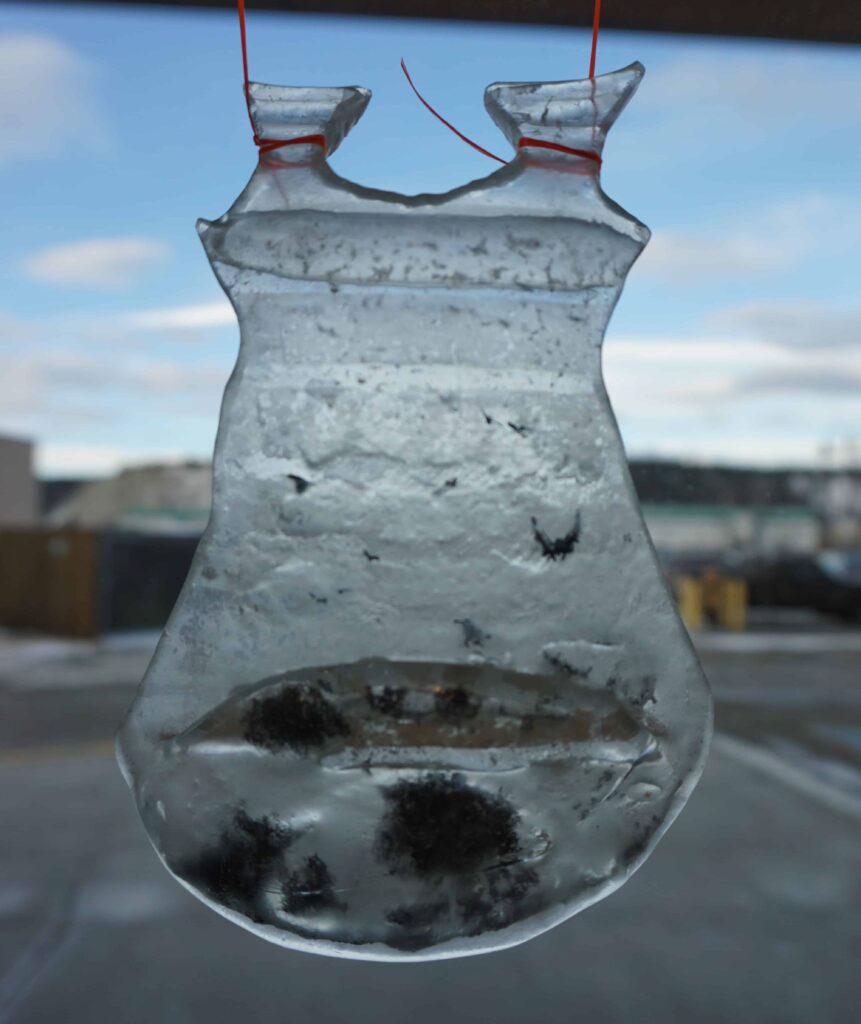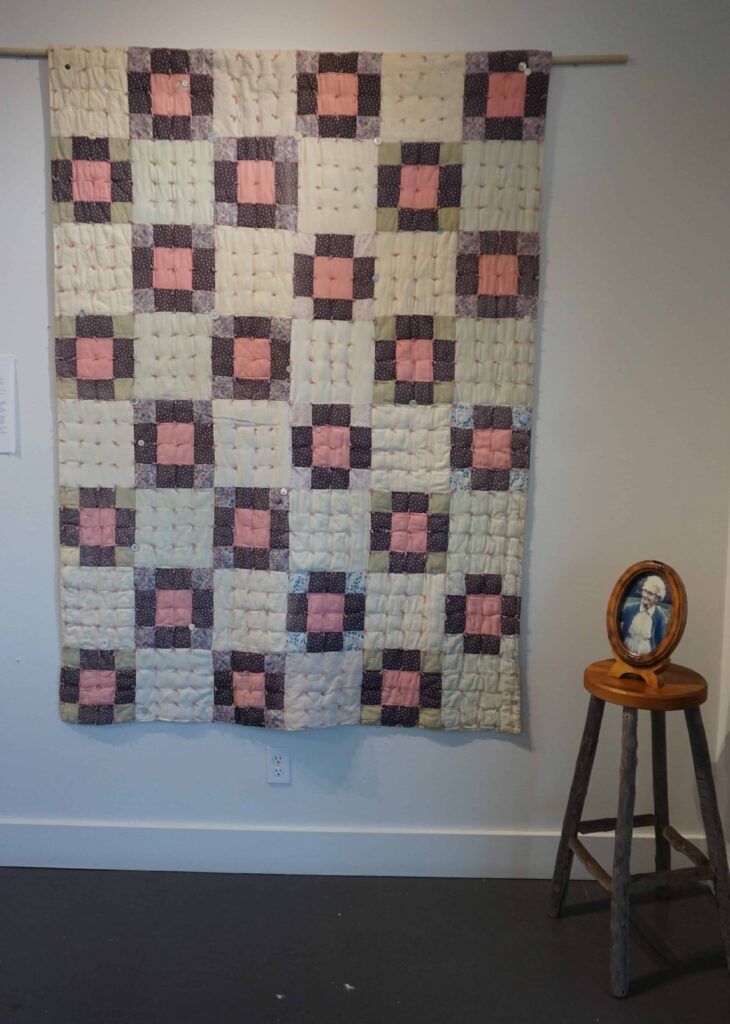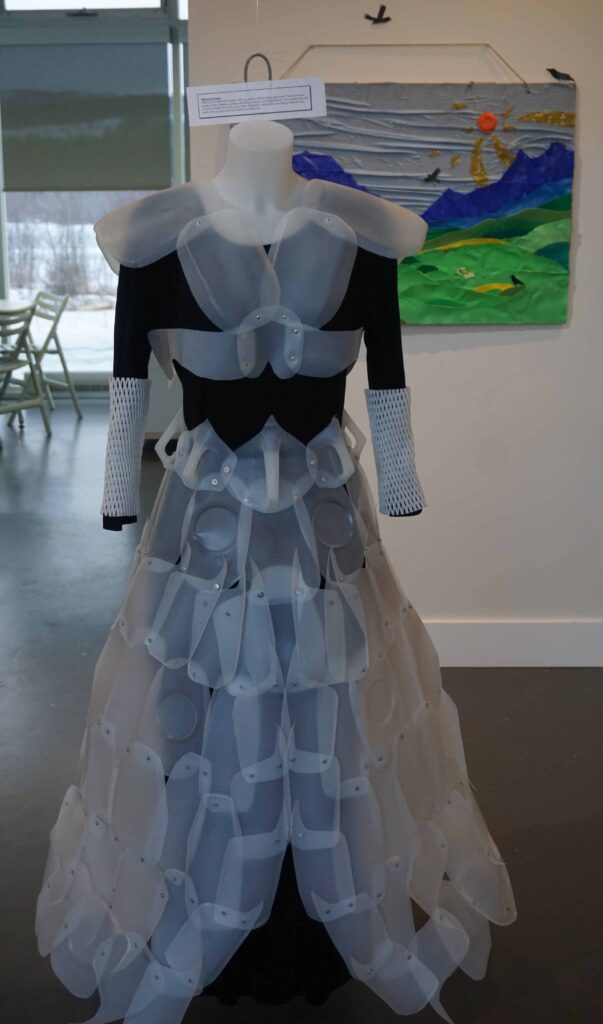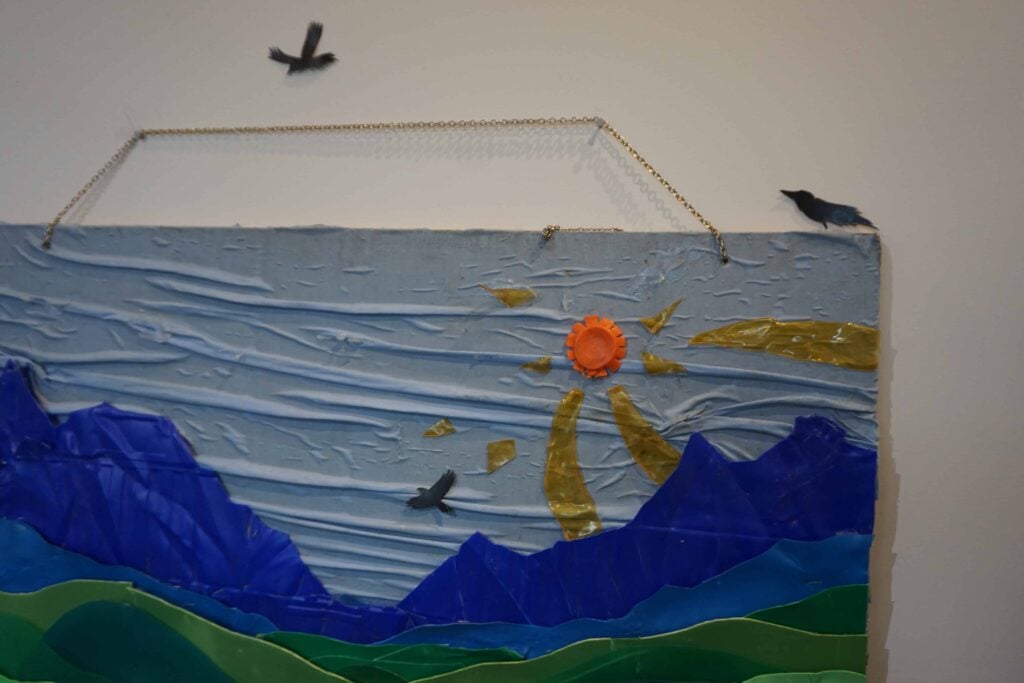



I have had the good fortune to be selected as an Artist in Residence at Raven ReCentre for two summers now. My work with Zero Waste Yukon seems to be permeating my creative mind. It made me question and explore how I use materials in the context of the material culture we inhabit here together, one with cars and Ziplock bags and grapefruit. I use all these things.
The more I think about these things, the more confused I get. I am, at best, a mediocre environmentalist.
Still, my position as an artist gives me freedom to explore these ideas, as my work leads me to engage with materials all the time. Given the freedom to make what I want, I look around me to see what’s available. When I started working in clay, an instructor often repeated how important it is to have compassion for the material—not to be angry with it, but to understand what it needs and how to work together with it. Maybe this kind of relationship can be part of changing the problematic parts of our material culture.
We are cut off from the story of materials and making behind most objects we encounter and use. A pencil, a notebook, a slice of ham—I buy them and use them. Folks thinking about environmental issues critique our collective habits and the way our tools and materials are currently designed to work, as following a pattern of “take-make-waste.” We buy things ignorant of their story before we encounter them in the shop. Then we use them and when we’re done with them, we throw them out. We take it for granted that there’s land for a landfill to take the things we’re ready to forget. It becomes somebody else’s problem. This assumption can be seen as colonialist.
I hope to inhabit some of these contradictions in this monthly column and make a place where you can hang out with them, too. One month (like this column), I’ll write from my own reflection and stories, grappling with the challenges of trying to live in a good way in our current environmental times. I’ll write from the bus, from carpooling, from art projects and so on.
I’ll alternate these first-person articles with stories that patch together other people’s reuse stories. Many artists are engaging with these issues, and I will certainly write about them because I love to write about art. But I am equally interested in stories from people’s lives. In residence at Raven, I found that people wanted to tell me about the little things they dig, the ways they found to reuse plastic bottles to keep snow out of the outlets to plug-in their cars, and so on. What are you doing? If you have a story like this to share with me, please email it to [email protected]. It might take awhile for me to get back to you … Please have patience with me.
I promised you carbon-neutral ham, though.
So I was coming out of the Independent, packing my groceries to my truck. I had just read The Carbon Footprint of Everything, by Mike Berners-Lee. It’s a good book, but daunting. If you’re concerned with carbon, a plastic shopping bag has less impact than paper. But microplastics! Etcetera, etcetera! Anyway, my head was spinning and it was clear from the book that grocery-store meat and dairy projects were expensive in my carbon footprint. I put my groceries in the trunk and turned towards my driver’s door. Then I spotted a pack of sliced deli ham on the slightly snowy asphalt of the parking lot. It sported a sticker, having been marked down 50 per cent off. I looked around for who might have dropped it, but couldn’t see anyone. It hadn’t been run over or stepped on yet. It was in perfect condition.
It wasn’t too warm outside … I took it home.
It seemed to me that it was bound for the garbage, so I figured the carbon in it was better served by eating it than letting it go to waste. I’m sure the ravens in the parking lot would have preferred I left it there to get run over, so they could eat it. The edges of the ham slices were a little dry but still very tasty, especially because they were (kind of … at least as far as I figured it) carbon neutral.
When I told this story to my nieces in Ontario, they didn’t think it was a good idea to eat ham that you had picked up off the ground. Irrationally, I feel the same way in Ontario. I wonder why it feels different here? Is it because of picking berries?
Diversions, an art exhibition of work drawn from the residencies at Raven ReCentre, over the summer of 2023, continues until February 26 at the Northern Front Studio Annex, in the same building as CHON-FM and Polarity Brewing.
Looking forward to celebrating your stories of ingenious reuse as we all navigate and co-create environmental and cultural changes together.




